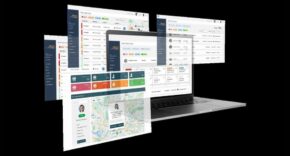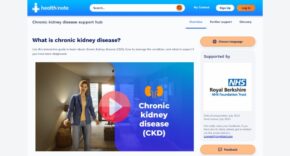
Medical intervention which is deployed at the time the patients get sick or reaches a crisis is a costly approach for any healthcare system. Prevention and early intervention are always better, lower cost and more effective options. Advances in technology, especially Internet of Medical Things (IoMT) and Artificial Intelligence (AI), can make a massive contribution to stopping health systems from being overwhelmed by rising demand and costs while increasing efficiency with no detriment to patients’ health.
Healthcare has entered the era of Big Data through the creation of electronic medical records (EMRs) and electronic health records (EHRs), the advent of ever more sophisticated portable and wearable health monitoring and patient reporting. The main barriers to building digital health systems for the 21st century are not technological issues any more. Now they are institutional and organisational. We have the means to evaluate patient health and pick up early indicators of potential problems; monitor vital signs for checking the progress of diseases; and streamlining the interaction between patients and healthcare professionals.
AI, Artificial Intelligence, in Healthcare can be considered as Augmented Intelligence, assistance for GPs, hospital doctors and medical workers to help them give better and faster decisions on treatment, with rich information on a patient’s condition. For example, AI is being used by GPs across the South West of England to offer earlier support to people identified as at risk of unplanned hospital admissions. A successful pilot in care homes reduced resident falls by 35%, attendances to Emergency Departments by 60%, and ambulance call-outs by 8.7%. The algorithm looks for patterns in patient’s records, then smart technology assesses an individual’s risk of unplanned hospital admission in the next year. Integrated medical and social neighbourhood teams then offer personalised support, such as remote health monitors, aps to self-report wellbeing, or linking up with voluntary support groups.
Virtual wards (also known as Hospital-at-home solutions) allow patients to receive the care they need at home safely and conveniently. The NHS in England has around 12,000 virtual ward beds covering patients with acute respiratory infections and heart failure to pressure ulcers. Data is transmitted via mobile devices like smartphones, wearable devices and tablets plus nursing teams check in daily via a video call. The patients also have a panic button to use whenever they feel they need extra medical support. The Center of Connected Health Policy conducted a study that showed a 50% reduction in 30-day readmission rate because of remote patient monitoring of heart failure patients. Northampton General Hospital Trust uses virtual wards and saw 76% of asthma patients avoid the need to be admitted to hospital, There are now many successful IoMT projects: we should be moving faster with more initiatives.
Healthcare Data is precious and it needs proper interpretation via Advanced Data Analytics (ADA)
Wearable and other remote devices can be deployed to collect and transfer health data: blood pressure; blood oxygen saturation (SpO2) and blood glucose levels; patient weight history; electrocardiogram (ECG) readings; reports from pacemakers; exercise levels; heart rates; temperature; events like accidental falls etc. Continuously monitored vital signs allow healthcare providers to intervene promptly when necessary. According to Deloitte Global, by 2024 the number of wearable medical devices will rise to almost 440 million from 320 million in 2022.
The key is that AI-aided systems can monitor all this data in real-time to flag anomalies, trends and causes for any concern. Actions can then be taken by an appropriate health professional to put in place a plan to lower the risk levels or trigger appropriate interventions, some of which can also be remotely delivered. OECD has pointed out that countries are “data rich and insights poor”; we need to match the collection of data with the application of Advanced Data Analytics (ADA) to analyse the data and provide the insights which enable quicker and earlier diagnostics but also speeds up research into causes and cures.
Technology needs enabling policies
The OECD stated in its 2019 report that there is an opportunity for investments in digital strategy to generate potential returns of $3USD for every $1USD of investment. It requires up front investment, but offers the promise of a fast return. Progress depends on an enabling policy environment and commitment at all levels from governments and hospitals down to local GP practices.
Demand for healthcare services is rising because the world’s population is more than three times larger than it was in the mid-twentieth century. According to data from World Population Prospects the number of persons aged 80 years or over is projected to triple, from 143 million in 2019 to 426 million in 2050. We are living longer but not necessarily healthier. The related costs are spiralling upwards but birth rates are declining, so the tax paying workforce to pay for it all is becoming a smaller base. In the United States, recent projections from the Bureau of Labor Statistics forecast that the healthcare and social assistance sector will create about 45% of all new jobs between 2022 and 2032. The global healthcare workforce shortage is projected to reach 18 million by 2030. There is a growing need for innovative solutions that can address these unique challenges. The IoMT has emerged as a promising source of solutions to address increasing demand. We have to use the technology available to us to retain a realistic balance.
Streamlining saves time and optimises cost
There are so many opportunities for IoMT and AI in the health system – from automating administrative processes to aiding health professionals in diagnosis, powering medical devices for improved treatment, virtually testing millions of antibiotics for superbugs, and discovering new methods to prevent or better treat chronic conditions. IoMT can streamline healthcare operations by reducing the amount of manual data entry and enabling healthcare providers to access patient data more easily. Digital health can contribute to reducing care fragmentation by integrating data across equipment and care providers. This is a key issue for people with complex health needs; estimates in the United States show that fragmented care increases costs by over USD$4,000 per patient.
We have talked about the benefits to an ageing population but many of the same things apply to rural and isolated populations, who can also benefit from remote interaction with healthcare providers.
Challenges: problems to be solved
Is everything IoMT & AI perfect? Of course there are still challenges. Fortunately, those challenges are not insurmountable.Interoperability: device manufacturers haven’t reached a consensus regarding communication protocols and standards but Governments can force them to do so and there are robotic processes that can bridge communication gaps.CyberSecurity: The healthcare sector is a notorious target for hackers, so more care needs to be taken with cybersecurity – encryption, blockchain and Fri-jam schemes, plus identity authentication and access control mechanisms address the matter. Still the most common entry for hackers is that someone lets them in by accident or intent, so more training and vigilance is needed. These problems need to be addressed but should not deter forward progress with the introduction of IoMT and AI.
Reduce pressures now
AI can streamline and prioritise access to healthcare, safely monitor patient progress and, more important, play an active role in early intervention and even prevention. IoMT enables real-time alerting, tracking and monitoring, which permits hands-on treatments, more timely intervention by doctors and improves complete patient care delivery results.
The use of IoMT in healthcare is delivering enhanced patient outcomes, reductions in costs, and, increasingly, preventative care and early intervention. IoMT has real potential to reduce pressure on healthcare systems, resources and professionals












